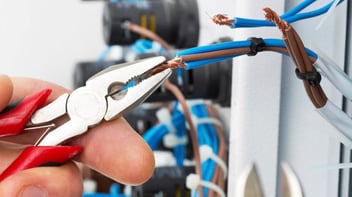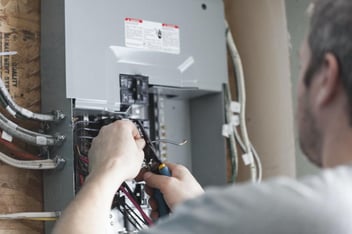As electric vehicles (EVs) become more common, pressure is rising on strata councils and building managers to offer EV charging. But before rushing into installation, it’s important to understand the permitting requirements, safety rules, and planning steps involved. Cutting corners here can lead to insurance issues, safety risks, or even fines.
Follow these steps to ensure your EV charger installation is safe, compliant, and future-ready.
Permits Aren’t Optional, They’re Required
Installing EV chargers without proper permits puts your building and residents at risk. A valid electrical installation permit confirms that the work complies with the BC Electrical Code and meets safety standards. It helps prevent hazards like electrical faults and fires and protects your liability.
Additionally, most rebate programs from BC Hydro, FortisBC, and CleanBC require permitted work done by licensed contractors. Skip the permit, and you may miss out on thousands in potential funding. You can find a licensed electrical contractor here.
Which Permit Do You Need?
In most cases, you'll need an electrical installation permit, even for system upgrades.
But there are exceptions:
- If your building already has an electrical operating permit, you may not need a separate one unless the EV project increases the system load by:
- More than 12.5 kVA (for systems ≤250 kVA)
- More than 36 kVA (for systems >250 kVA)
Also, if your total load pushes over 250 kVA, you may need to upgrade to an operating permit.
Talk to a licensed electrical contractor or professional engineer to be sure you’re covered.
Load Calculations: Don’t Guess, Calculate
Before installing chargers, you need to know if your building's electrical system can handle the extra demand. That’s where a load calculation comes in.
A certified Field Safety Representative (FSR) or engineer should:
- Assess all current loads (common areas + suites)
- Follow Section 8 of the BC Electrical Code
- Review 12 months of electricity usage data
Accurate calculations help you avoid overloading circuits or triggering costly electrical upgrades later.
Hire the Right Contractor
Only licensed electrical contractors are legally allowed to install EV chargers in multi-unit and commercial buildings. These professionals know the code, pull the right permits, and ensure everything is up to standard.
Make sure your contractor will:
- Confirm what type of permit is required
- Apply for the permit on your behalf
- Provide inspection documentation and close the permit properly
Verify your contractor’s license here.
Plan Ahead for Long-Term Success
If your building is planning to support multiple EV chargers, don’t wing it. Develop a full EV charging strategy early. That includes:
- Assessing current electrical capacity
- Exploring EV energy management systems
- Factoring in load sharing and rebate options
Early planning avoids expensive retrofits later and ensures fair access to charging infrastructure for all residents.
Want More Info?
Visit Technical Safety BC’s EV Charger page for in-depth resources on:
- Permit types
- Contractor requirements
- Load calculations
- EV energy management systems
- Safety bulletins
Final Tip for Strata Councils
Get ahead of the curve. EV adoption isn’t slowing down, and demand for charging access will only grow. A well-planned, code-compliant installation not only keeps your building safe, it makes your property future-ready.

.jpg)


